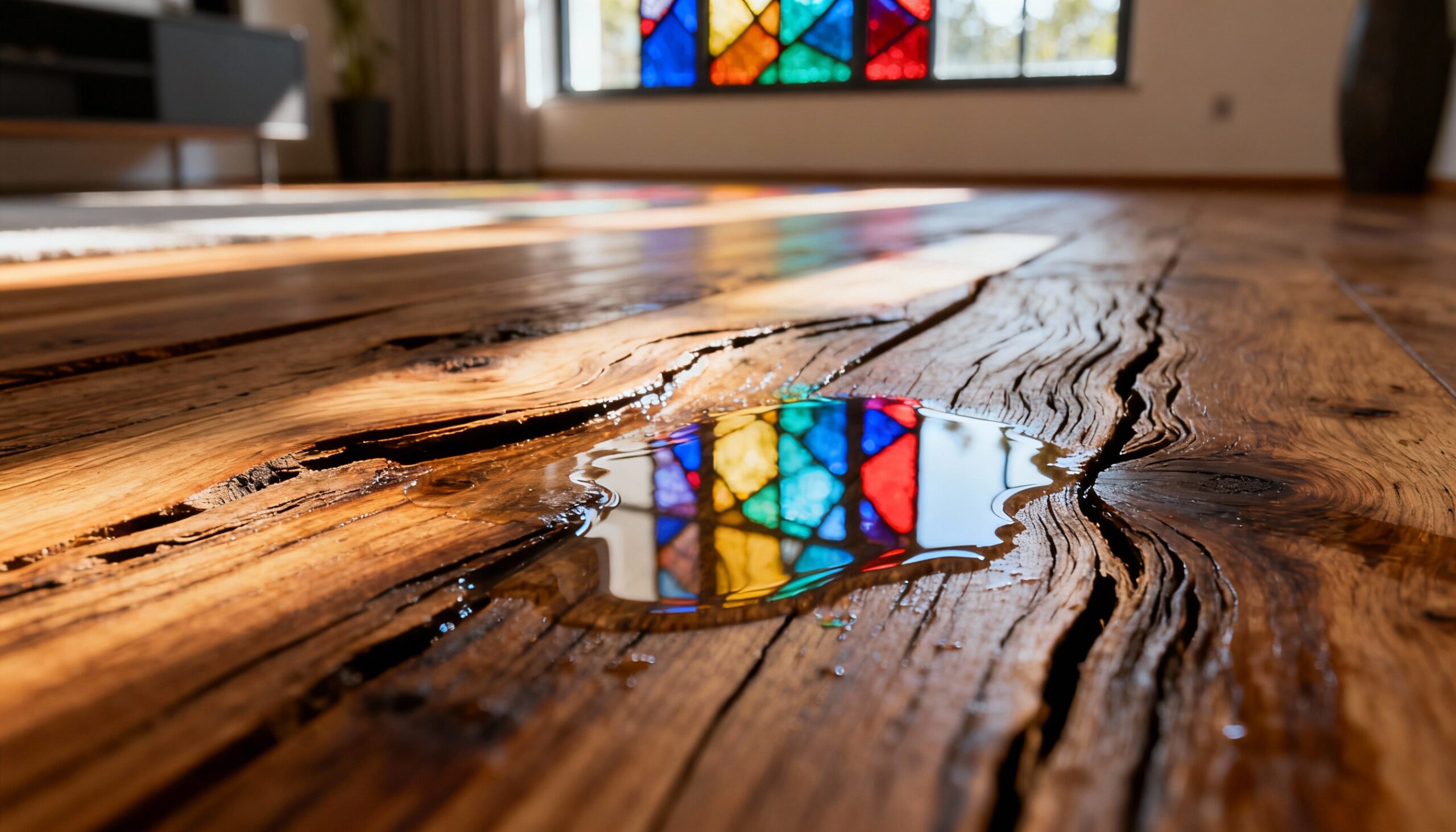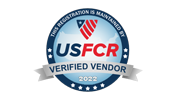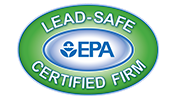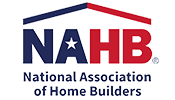Understanding Hardwood Floor Water Damage
Hardwood floor water damage occurs when moisture penetrates the wood surface and affects the structural integrity of your flooring. Wood is a hygroscopic material, meaning it naturally absorbs and releases moisture from its environment. When excessive water exposure happens, this natural process becomes problematic.
The severity of hardwood floor water damage depends on several critical factors. Water type plays a significant role—clean water from supply lines causes less damage than contaminated water from sewage or flooding. Exposure duration determines how deeply moisture penetrates the wood fibers. Wood species and finish affect absorption rates, with some hardwoods more resistant than others.
Temperature and humidity levels during and after the incident also impact the extent of hardwood floor water damage. Warmer temperatures accelerate moisture absorption, while high humidity prevents proper drying. Understanding these variables helps property owners and professionals determine the most effective restoration approach for water damaged floors.
Categories of Water Damage
Water damage professionals classify hardwood floor water damage incidents into three distinct categories based on contamination level. This classification directly affects restoration techniques and safety protocols required during the flooring repair process.
| Category | Water Source | Contamination Level | Floor Impact |
|---|---|---|---|
| Category 1 | Clean water (supply lines, rain) | Minimal contaminants | Easiest to restore if addressed quickly |
| Category 2 | Gray water (appliances, toilet overflow) | Moderate contamination | Requires thorough cleaning and disinfection |
| Category 3 | Black water (sewage, flooding) | Highly contaminated | Often requires replacement due to health risks |
Important: Category 3 water damage poses serious health risks. Always consult professionals before attempting any restoration work with contaminated water exposure.
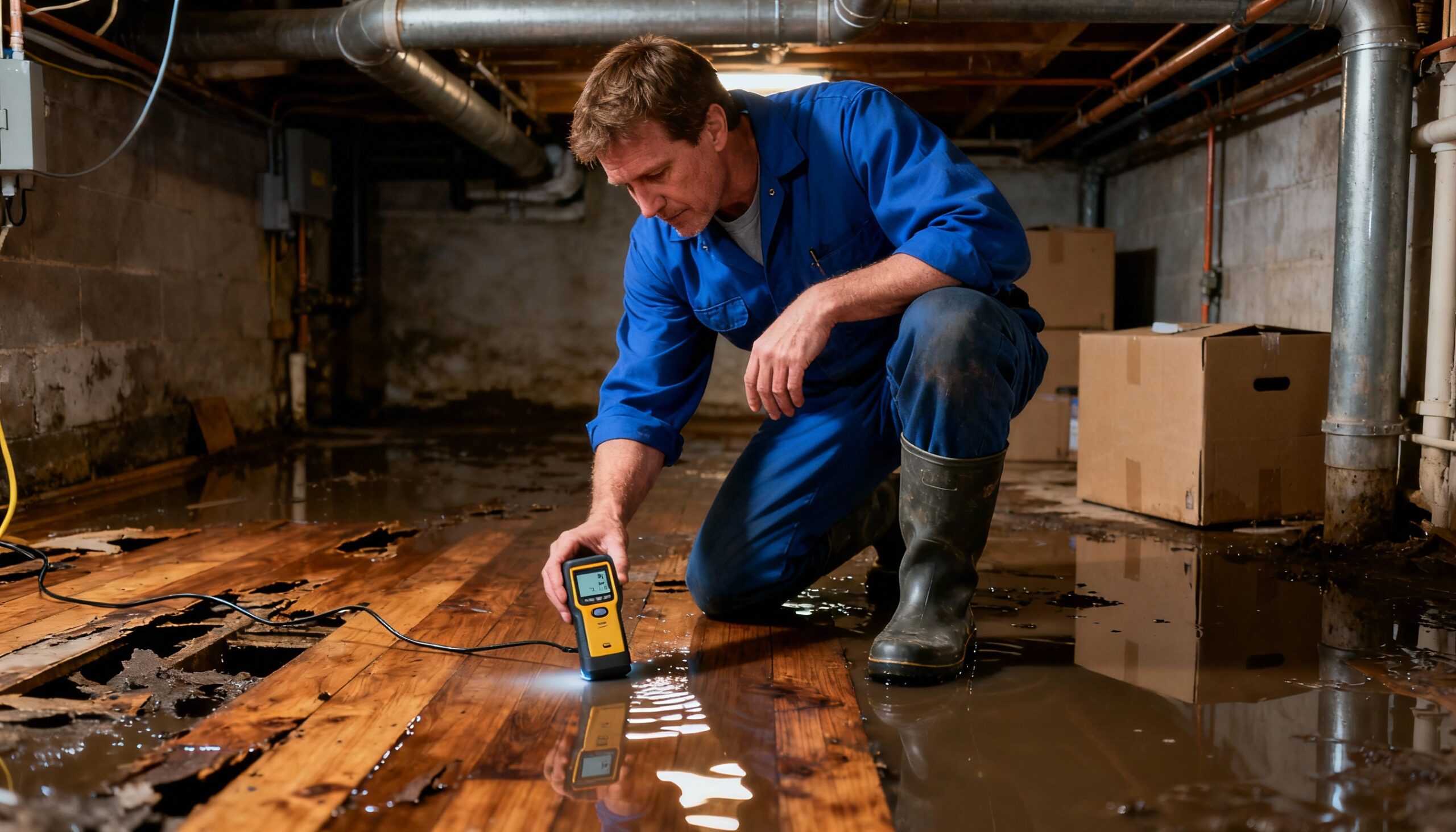
Immediate Steps When Water Damage Occurs
The first 24-48 hours after discovering hardwood floor water damage are absolutely critical. Quick action during this window significantly increases the likelihood of successful restoration and minimizes long-term damage to your flooring investment.
Your immediate response should focus on stopping water intrusion, removing standing water, and creating optimal drying conditions. Every hour of delayed action allows moisture to penetrate deeper into wood fibers, subfloors, and supporting structures, worsening the hardwood floor water damage.
Critical First Actions
- Stop the water source immediately. Shut off the water supply if the damage comes from plumbing. For external flooding, create barriers to prevent additional water entry.
- Remove standing water as quickly as possible. Use wet vacuums, mops, or towels to extract surface water. The faster you remove water, the less penetration occurs into the wood. For significant water accumulation, professional water cleanup services provide rapid extraction capabilities.
- Document the damage thoroughly. Take photographs and videos from multiple angles for insurance purposes before beginning any cleanup or restoration work.
- Remove furniture and rugs from affected areas. This prevents additional moisture absorption and allows air circulation across the entire floor surface.
- Increase air circulation and reduce humidity. Open windows (if outdoor humidity is lower), run fans, and deploy dehumidifiers to accelerate the drying process.
- Contact your insurance company within 24 hours. Prompt notification ensures compliance with policy requirements and expedites the claims process.
- Call professional restoration specialists. Expert assessment within the first 48 hours dramatically improves restoration outcomes for water damaged floors. Our 24-hour emergency restoration services provide immediate response when you need it most.
💡 Pro Tip: Don’t use heat sources like space heaters or hair dryers directly on wet hardwood. Rapid drying can cause additional warping, cupping, and cracking that complicates restoration efforts.
Can Your Hardwood Floors Be Saved? Assessment Criteria
Determining whether hardwood floor water damage can be reversed requires careful evaluation of multiple factors. Professional restoration specialists use specific criteria to assess hardwood floor water damage severity and recommend appropriate action plans.
The assessment process examines both visible surface damage and hidden structural issues beneath the flooring. Understanding these evaluation criteria helps property owners set realistic expectations about restoration possibilities and potential outcomes.
Factors That Determine Restoration Viability
Exposure duration stands as the single most important factor in hardwood floor water damage assessment. Floors exposed to standing water for less than 24 hours have excellent restoration potential. Between 24-48 hours, restoration remains possible but more challenging. Beyond 72 hours of hardwood floor water damage exposure, replacement often becomes the most practical solution.
Flooring type and installation method significantly impact restoration options. Solid hardwood floors generally withstand water better than engineered wood products. Nail-down installations allow better drying access compared to glued-down floors. Floating floors with compromised underlayment usually require replacement.
Subfloor condition must be evaluated thoroughly. If moisture has compromised the subfloor integrity, surface restoration alone won’t address underlying structural problems. Professional moisture meters measure subfloor moisture content to determine if drying or replacement is necessary.
Visible damage indicators provide clues about hardwood floor water damage restoration feasibility. Minor surface stains and slight cupping often resolve with proper drying and refinishing. Severe warping, buckling, or delamination typically indicates irreversible hardwood floor water damage requiring replacement sections or complete reinstallation.
| Damage Type | Appearance | Restoration Potential | Recommended Action |
|---|---|---|---|
| Cupping | Edges higher than center | Good if addressed quickly | Dry thoroughly, monitor, refinish if needed |
| Crowning | Center higher than edges | Moderate, depends on severity | Professional assessment and sanding |
| Buckling | Planks lifted from subfloor | Poor, structural damage likely | Replacement of affected sections |
| Staining | Discoloration without warping | Excellent with proper treatment | Clean, dry, sand, and refinish |
� Home Tip: After initial drying, monitor your floors for 7-14 days before making final restoration decisions. Minor cupping often resolves naturally as moisture equilibrium returns.
Professional Wood Floor Restoration Methods
Professional restoration of hardwood floor water damage involves systematic processes that address both immediate moisture issues and long-term structural integrity. Understanding these methods helps property owners appreciate why professional intervention often yields superior results compared to DIY approaches for treating hardwood floor water damage.
Restoration specialists use commercial-grade equipment and proven techniques developed through years of experience with various wood species, damage severities, and environmental conditions. This expertise proves invaluable when dealing with valuable hardwood flooring investments.
Professional Drying and Extraction
Industrial moisture extraction equipment removes water far more effectively than household wet vacuums when treating hardwood floor water damage. Professionals use truck-mounted or portable extraction units capable of removing hundreds of gallons from flooring and subflooring systems. These machines create powerful suction that pulls moisture from deep within wood fibers and underlayment materials.
After extraction, specialized drying equipment creates optimal conditions for moisture evaporation. Air movers generate high-velocity airflow across floor surfaces, accelerating evaporation rates by 50-70% compared to ambient drying. Commercial dehumidifiers remove moisture from the air, preventing reabsorption and maintaining ideal humidity levels throughout the drying process.
Temperature control plays a crucial role in professional drying protocols. Restoration specialists maintain ambient temperatures between 70-80°F while monitoring relative humidity levels. This controlled environment promotes steady, even drying that minimizes warping and distortion during the flooring repair process.
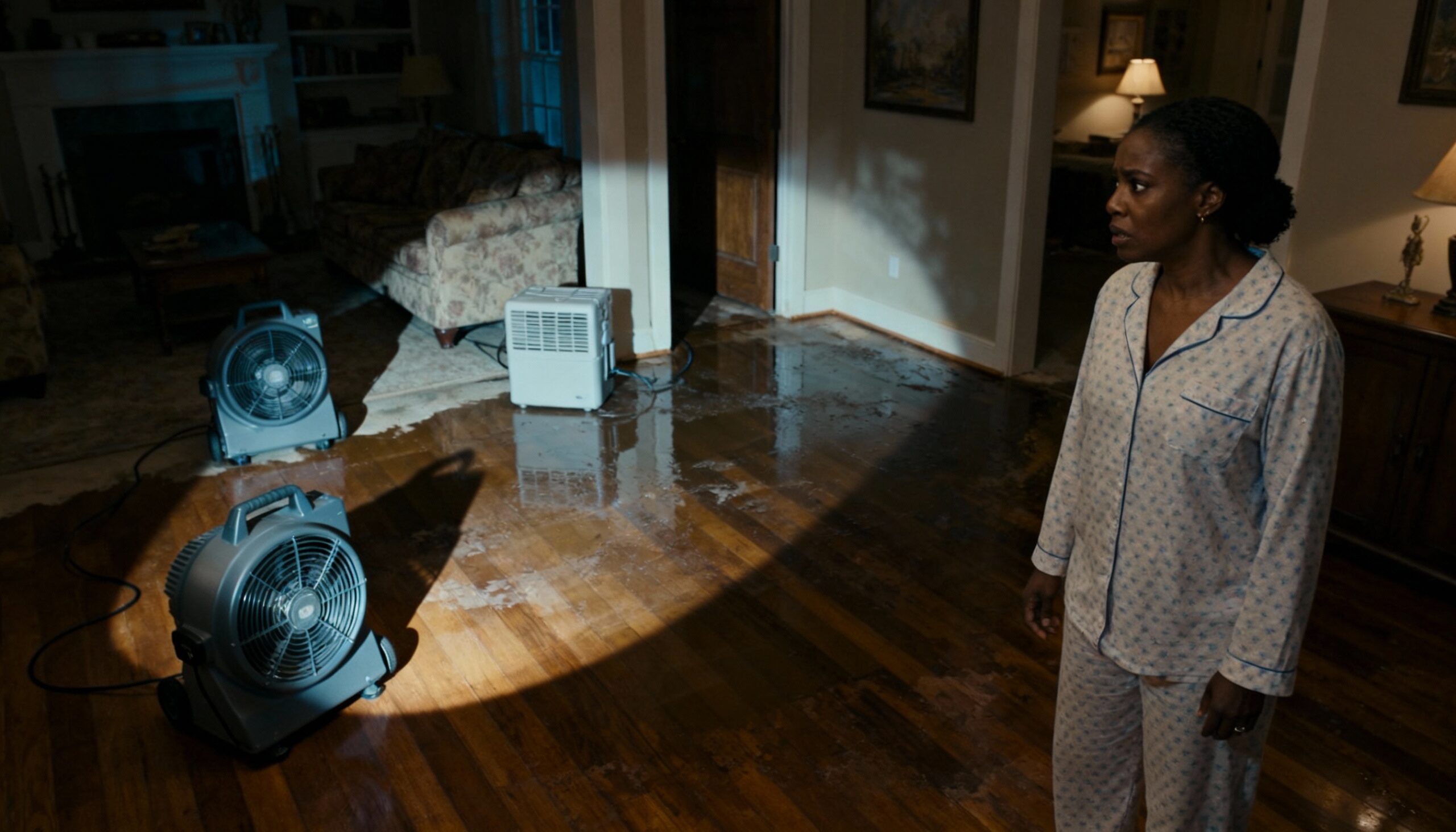
Moisture Monitoring and Documentation
Professional restoration teams track moisture levels throughout the affected areas using calibrated moisture meters. These devices measure moisture content in both surface flooring and subfloor materials, providing objective data about drying progress. Daily readings ensure the restoration process proceeds effectively and identify any areas requiring additional attention.
Documentation includes detailed moisture maps showing initial readings, daily progress measurements, and final dry-standard verification. This thorough record-keeping satisfies insurance requirements and provides property owners with confidence that restoration meets industry standards for wood floor restoration.
Refinishing and Restoration
Once flooring reaches acceptable moisture levels, refinishing restores appearance and protection. Professional refinishing involves several critical steps that require specialized equipment and expertise. Drum sanders remove damaged finish layers and smooth minor surface irregularities caused by water exposure.
After sanding, professionals apply stain if desired, followed by multiple protective finish coats. Polyurethane finishes provide excellent water resistance and durability for high-traffic areas. Oil-based finishes penetrate deeper into wood fibers, offering enhanced moisture protection. The choice depends on the original finish type, wood species, and homeowner preferences.
Between finish coats, light sanding with fine-grit abrasives ensures proper adhesion. This attention to detail creates a smooth, uniform surface that resists future moisture intrusion and maintains the beauty of restored hardwood floors for years to come.
| Restoration Phase | Typical Duration | Key Activities | Success Indicators |
|---|---|---|---|
| Emergency Response | 0-24 hours | Water extraction, assessment, initial drying | Standing water removed, equipment deployed |
| Structural Drying | 3-7 days | Continuous drying, moisture monitoring | Moisture levels approaching dry standards |
| Stabilization | 7-14 days | Final drying, floor acclimation | Stable moisture readings, minimal movement |
| Refinishing | 3-5 days | Sanding, staining, finish application | Smooth surface, protective coating applied |
âš ï¸ Important: Rushing the restoration timeline increases risk of recurring problems. Proper drying and acclimation periods cannot be safely shortened without compromising long-term results.
When Replacement Becomes Necessary
Despite best restoration efforts, some hardwood floor water damage scenarios require partial or complete replacement. Recognizing these situations early prevents wasted time and resources on restoration attempts unlikely to succeed when hardwood floor water damage is too severe.
Severe structural damage, extensive contamination, or prolonged water exposure often make replacement the most practical and economical solution. Understanding when to transition from restoration to replacement helps property owners make informed decisions about their flooring investments.
Clear Indicators for Replacement
Delamination of engineered flooring from hardwood floor water damage cannot be reversed through drying or refinishing. When veneer layers separate from core materials, structural integrity is permanently compromised. These floors must be replaced to ensure safety and proper function.
Subfloor damage or rot from hardwood floor water damage requires removal of surface flooring for proper repair. If the subfloor has deteriorated, swelled, or developed mold growth, surface restoration alone doesn’t address underlying problems. Complete removal allows proper subfloor repair or replacement before installing new flooring. When mold is present, professional mold removal and remediation services ensure safe and complete elimination.
Category 3 water contamination creates health hazards that make restoration inadvisable. Sewage backup or floodwater contamination penetrates deep into porous wood materials, creating conditions for harmful bacteria and mold growth. Replacement with proper decontamination protocols protects occupant health and safety. For properties affected by multiple disaster types, our fire and smoke damage restoration services also handle complex restoration scenarios.
Extreme warping or buckling that persists after proper drying indicates permanent structural damage. Boards that have buckled more than 1/4 inch or show severe distortion won’t return to flat, stable condition. These sections require replacement to restore proper floor function and appearance.
💡 Pro Tip: When replacing sections of hardwood flooring, save several removed boards for future repairs. Wood species, stain colors, and finishes change over time, making perfect matches difficult years later.
Prevention Strategies for Hardwood Floor Protection
Preventing hardwood floor water damage proves far more cost-effective than dealing with restoration or replacement. Implementing protective measures and maintenance routines significantly reduces hardwood floor water damage risk to your flooring investment.
A comprehensive prevention strategy addresses both sudden water events and gradual moisture accumulation that can cause hardwood floor water damage over time. These proactive measures protect your floors while maintaining their beauty and value for decades.
Routine Maintenance and Monitoring
Regular inspection of plumbing fixtures, appliances, and water supply lines helps identify potential problems before they cause hardwood floor water damage. Check for leaks around toilets, under sinks, and behind washing machines monthly. Small drips can cause significant hardwood floor water damage over time if left unaddressed.
Maintain proper indoor humidity levels between 35-55% year-round. Use humidifiers during dry winter months and dehumidifiers during humid summer periods. Wood floors expand and contract with humidity changes, and extreme fluctuations increase stress on joints and fasteners that can lead to gaps or buckling.
Clean spills immediately using dry or slightly damp cloths. Never allow standing water to remain on hardwood surfaces. Even small amounts of liquid can penetrate finish layers and damage wood if not promptly removed, making quick response essential for long-term floor protection.
Protective Measures and Upgrades
Install water leak detection systems near appliances and plumbing fixtures. Modern smart detectors alert homeowners immediately when moisture is detected, allowing rapid response before hardwood floor water damage occurs. These affordable devices provide 24/7 monitoring that prevents minor issues from becoming major hardwood floor water damage events.
Apply quality floor finishes and maintain them according to manufacturer recommendations. Well-maintained finishes create moisture barriers that protect wood from water penetration. Recoat high-traffic areas every 3-5 years or when finish wear becomes visible to ensure continued protection. During major water events, contents cleaning and restoration services protect your belongings while floors are being restored.
Consider installing moisture barriers in below-grade or basement installations. These protective layers prevent ground moisture from migrating upward through concrete slabs and compromising hardwood flooring from below. Professional installation ensures proper vapor retarder selection and placement for your specific conditions.
| Prevention Strategy | Protection Level | Maintenance Frequency | Primary Benefit |
|---|---|---|---|
| Leak Detection Systems | High | Battery check annually | Early warning prevents major damage |
| Humidity Control | Medium-High | Continuous monitoring | Prevents expansion/contraction issues |
| Finish Maintenance | Medium | Recoat every 3-5 years | Water-resistant protective barrier |
| Regular Inspections | Medium | Monthly plumbing checks | Identifies problems before damage occurs |
🠠Home Tip: Place waterproof mats under pet water bowls, plant containers, and in entryways where wet shoes and umbrellas can drip onto hardwood floors.
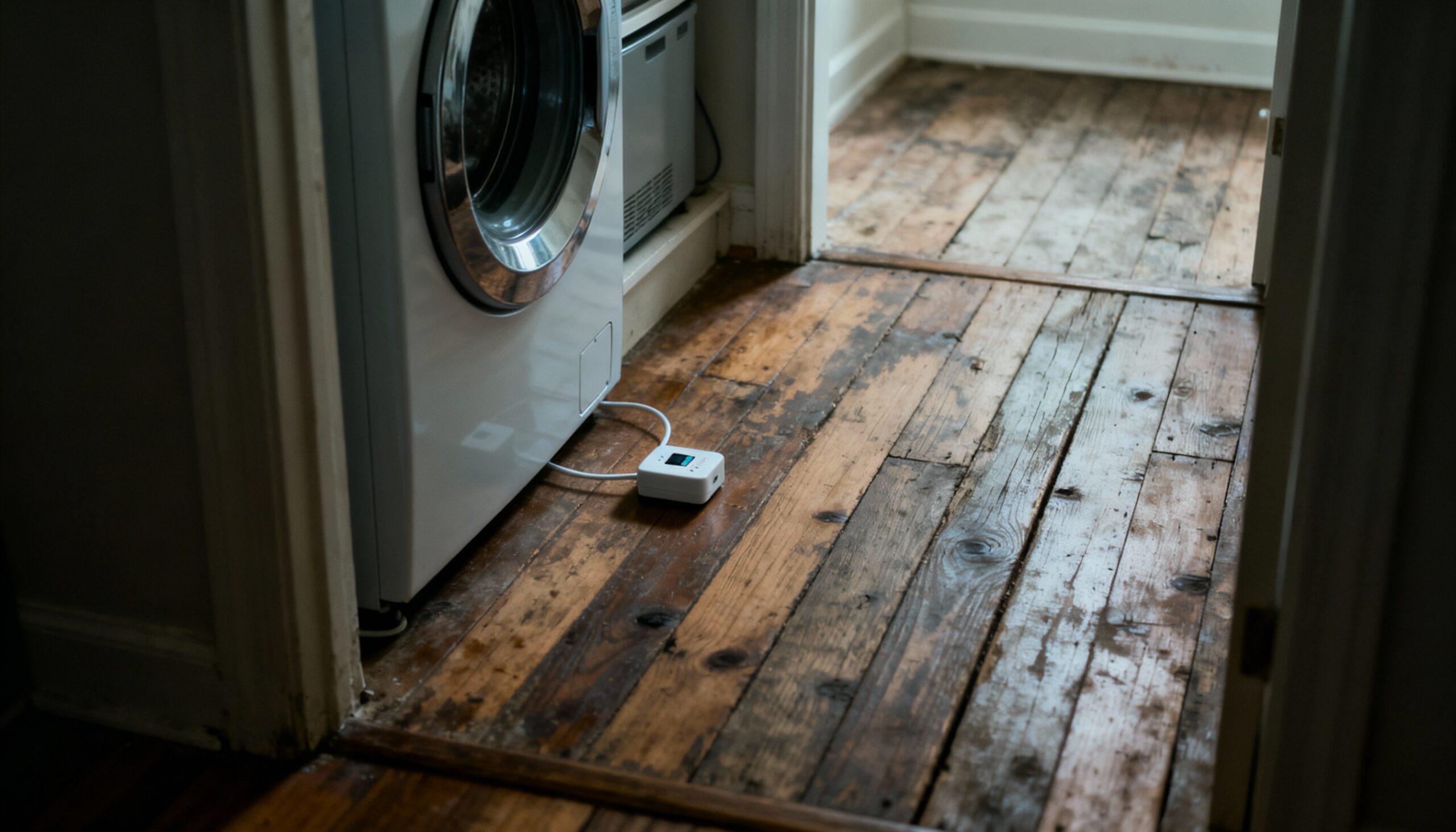
Insurance Considerations for Hardwood Floor Water Damage
Understanding insurance coverage for hardwood floor water damage helps property owners navigate the claims process and maximize recovery for restoration or replacement expenses. Coverage for hardwood floor water damage varies significantly based on water source, policy type, and specific circumstances surrounding the damage event.
Standard homeowners insurance typically covers sudden and accidental water damage from sources like burst pipes or appliance malfunctions. However, gradual damage from leaks, flooding from external sources, or lack of maintenance often falls outside standard coverage limits.
What Insurance Typically Covers
Sudden internal water damage from plumbing failures, water heater ruptures, or appliance malfunctions generally qualifies for coverage. This includes both immediate restoration work and necessary flooring repair to return floors to pre-damage condition. Most policies also cover related expenses like temporary housing during extensive restoration. Learn more about our comprehensive residential restoration services that work with insurance claims.
Accidental overflow events such as overflowing bathtubs, toilet backups (non-sewage), or broken supply lines fall within standard coverage parameters. Quick documentation and prompt professional intervention help ensure full coverage for eligible restoration expenses.
Common Coverage Exclusions
Flood damage from external sources requires separate flood insurance through the National Flood Insurance Program or private insurers. Standard homeowners policies specifically exclude damage from rising water, heavy rain accumulation, or storm surge. Property owners in flood-prone areas should secure appropriate flood coverage to protect hardwood flooring investments.
Maintenance-related issues like slow leaks, deteriorating seals, or gradual moisture accumulation typically aren’t covered. Insurance providers expect property owners to maintain systems and address minor issues before they cause significant damage. Regular maintenance documentation can help dispute claims denials based on maintenance exclusions.
💡 Pro Tip: Take photos of your hardwood floors when newly installed or refinished. This documentation helps insurance adjusters assess damage extent and establishes baseline condition for claims processing.
DIY vs. Professional Restoration: Making the Right Choice
Deciding between DIY efforts and professional hardwood floor water damage restoration requires honest assessment of damage severity, available equipment, technical skills, and time constraints. While minor surface water exposure might be manageable for experienced homeowners, significant hardwood floor water damage demands professional intervention.
Understanding the limitations of DIY approaches helps property owners avoid costly mistakes that can worsen hardwood floor water damage or create new problems. Professional restoration services provide expertise, equipment, and guarantees that DIY methods cannot match for serious hardwood floor water damage scenarios.
When DIY Might Be Appropriate
Very minor water exposure affecting small areas with immediate cleanup can sometimes be handled without professional help. If clean water was present less than one hour, no standing water penetrated joints or seams, and surfaces dried completely within 24 hours, DIY cleanup may suffice. This requires access to fans, dehumidifiers, and diligent monitoring for signs of problems.
Surface-level cleaning after quick water removal on sealed floors with no visible warping or cupping might not require professional intervention. However, continued monitoring for several weeks remains essential to detect delayed problems like mold growth or gradual warping that weren’t immediately apparent.
When Professional Help Is Essential
Standing water or saturation causing hardwood floor water damage always requires professional extraction and drying equipment. Home wet vacuums and fans cannot remove moisture from subfloors or create the controlled drying conditions necessary to prevent permanent hardwood floor water damage. Professional equipment can remove 50-100 times more water than household equipment.
Any visible warping, cupping, or buckling indicates moisture has penetrated deeply into wood and subfloor materials, creating serious hardwood floor water damage. Professionals use moisture meters to map damage extent and deploy appropriate drying strategies. Without proper equipment and expertise, attempted DIY restoration of hardwood floor water damage with warped floors typically fails or creates additional problems.
Water damage exceeding 24 hours or affecting areas larger than 10 square feet demands professional assessment regardless of apparent severity. Hidden moisture behind walls, under cabinets, or in subflooring requires specialized detection equipment and expertise to properly address.
Category 2 or 3 water contamination poses health risks that require professional remediation protocols. Attempting DIY cleanup with contaminated water exposes occupants to harmful bacteria, pathogens, and toxins. Professional restoration companies follow strict safety protocols and have proper protective equipment for handling hazardous materials.
âš ï¸ Important: Insurance coverage often requires professional documentation and restoration work. DIY attempts may void coverage or reduce claim payments if improper techniques worsen damage or delay professional intervention.
Frequently Asked Questions
How long does it take for water to damage hardwood floors?
Hardwood floor water damage begins within hours of exposure. Surface moisture penetrates finish layers within 2-4 hours, reaching wood fibers by 6-12 hours. Visible cupping or warping from hardwood floor water damage typically appears within 24-48 hours of standing water exposure. However, damage severity depends on water volume, wood species, and environmental conditions. Quick response within the first 24 hours dramatically improves restoration success rates.
Can I use a regular fan to dry water damaged hardwood floors?
Regular household fans can help with very minor surface moisture but lack the power needed for significant hardwood floor water damage. Professional air movers generate 10-20 times more airflow velocity, creating the rapid evaporation necessary for deep drying. For hardwood floor water damage exceeding minor spills, professional drying equipment combined with commercial dehumidifiers provides the controlled environment needed to prevent permanent damage and mold growth.
Will my hardwood floors return to normal after water damage?
Water damaged floors can return to normal appearance if addressed within 24-48 hours and dried properly. Minor cupping often resolves as wood returns to equilibrium moisture content over 2-4 weeks. However, severe warping, buckling, or prolonged exposure may cause permanent damage requiring replacement. Professional assessment determines restoration viability based on damage extent, wood species, and exposure duration.
Does insurance cover hardwood floor water damage restoration?
Standard homeowners insurance typically covers sudden and accidental water damage from sources like burst pipes or appliance failures. This includes necessary restoration or replacement of damaged hardwood flooring. However, gradual damage from slow leaks, flooding from external sources, or maintenance-related issues are usually excluded. Separate flood insurance is required for damage from rising water or heavy rainfall accumulation.
What’s the difference between cupping and crowning in hardwood floors?
Cupping occurs when board edges rise higher than centers, creating a concave surface. This happens when moisture enters from below, causing the underside to expand more than the top surface. Crowning is the opposite—board centers rise higher than edges, creating a convex surface. Crowning typically results from sanding cupped floors before they fully dry, or from top-surface moisture exposure after bottom-drying occurs.
How do I prevent future water damage to my hardwood floors?
Prevention starts with regular plumbing inspections, immediate spill cleanup, and maintaining indoor humidity between 35-55%. Install water leak detection systems near appliances and plumbing fixtures for early warning. Apply and maintain quality floor finishes every 3-5 years to create moisture barriers. Use protective mats in high-risk areas like entryways, kitchens, and under appliances to catch water before it reaches flooring.
Protect Your Hardwood Flooring Investment
Hardwood floor water damage doesn’t automatically mean floor replacement. With rapid response, professional restoration techniques, and proper assessment, many instances of hardwood floor water damage can be successfully restored to their original beauty and function. The key factors determining restoration success include quick action within the first 24-48 hours, professional moisture extraction and drying, and careful monitoring throughout the restoration process.
Understanding the difference between salvageable and unsalvageable hardwood floor water damage helps property owners make informed decisions about restoration versus replacement. Professional restoration specialists provide expertise, equipment, and guarantees that DIY methods cannot match for significant hardwood floor water damage scenarios.
Don’t let hardwood floor water damage destroy your valuable flooring. Every hour of delay allows moisture to penetrate deeper and cause more extensive hardwood floor water damage. Professional assessment and intervention within the critical first 24 hours dramatically improves restoration outcomes and protects your flooring investment.
Experiencing hardwood floor water damage? Our restoration specialists provide 24/7 emergency response with rapid extraction, professional drying, and complete restoration services. We work directly with insurance companies and guarantee our restoration work. Contact us immediately for emergency assistance.

